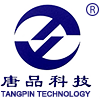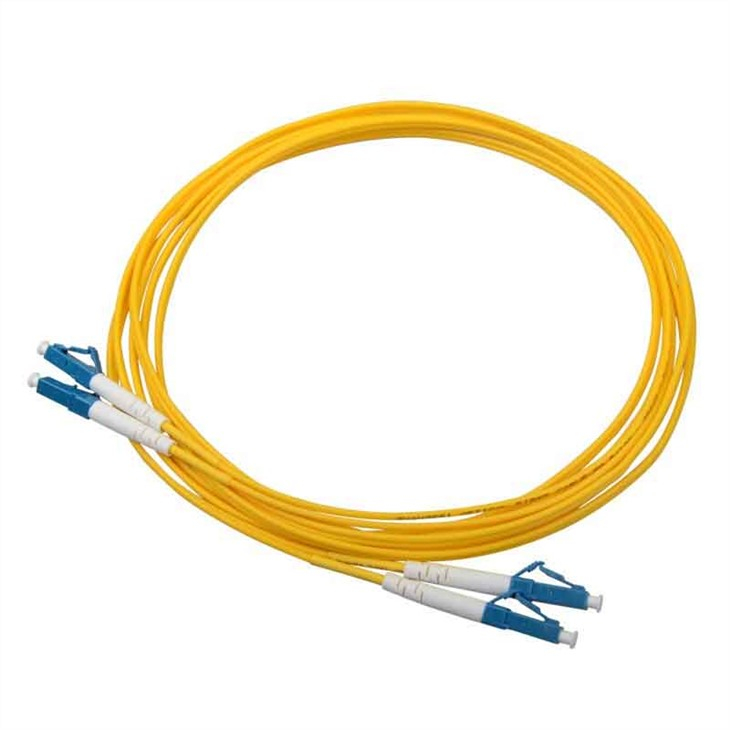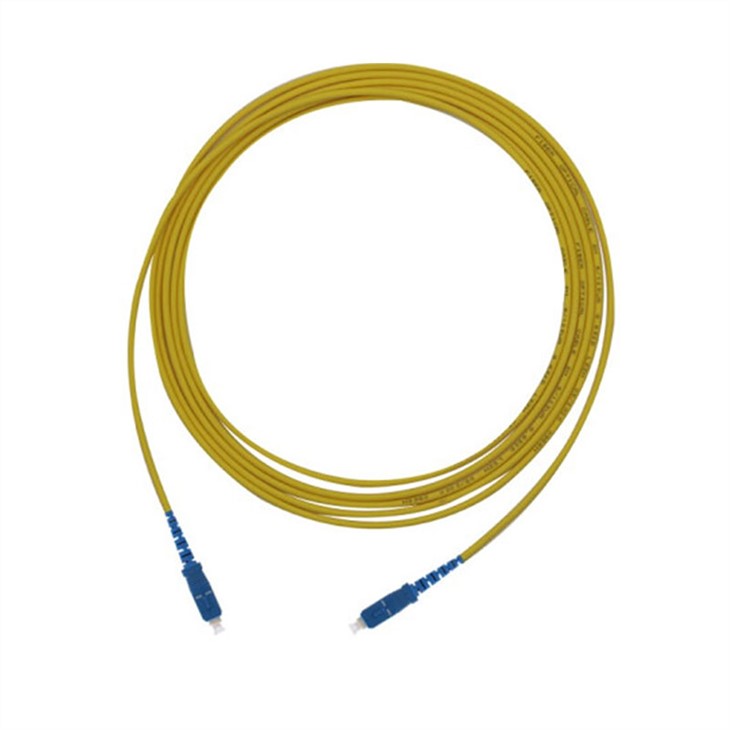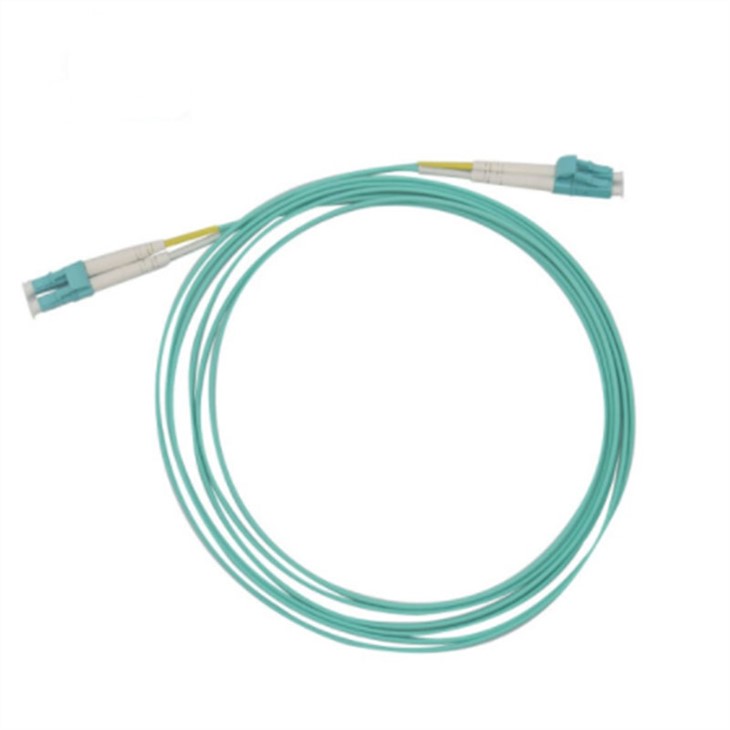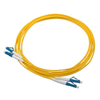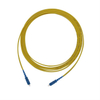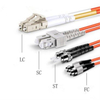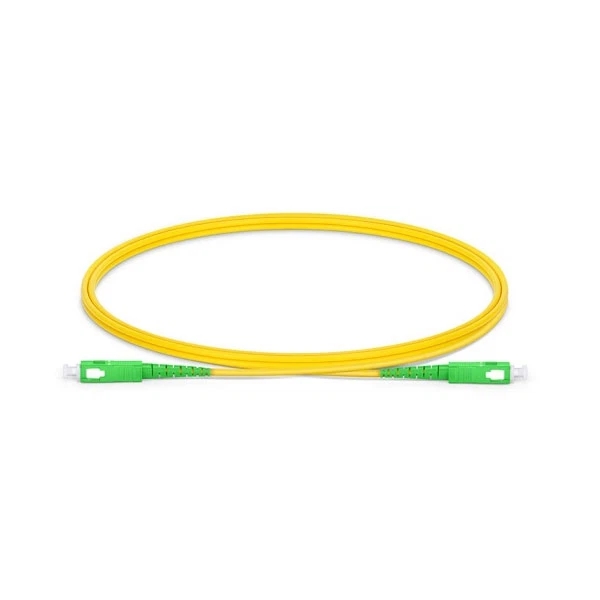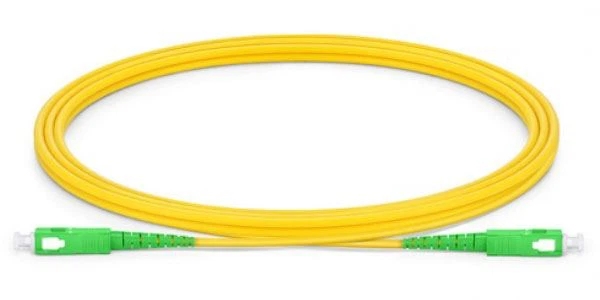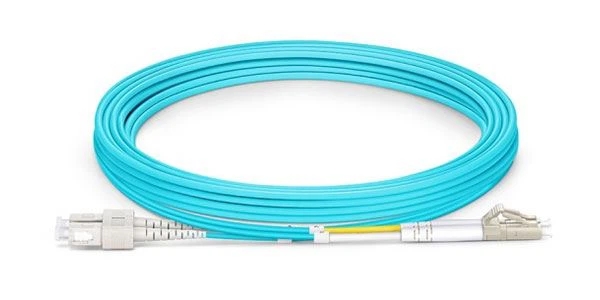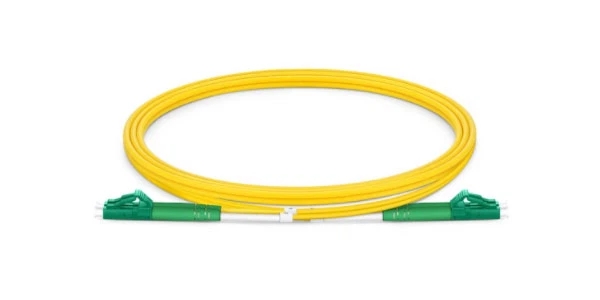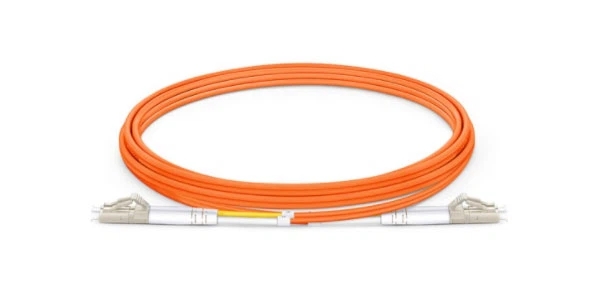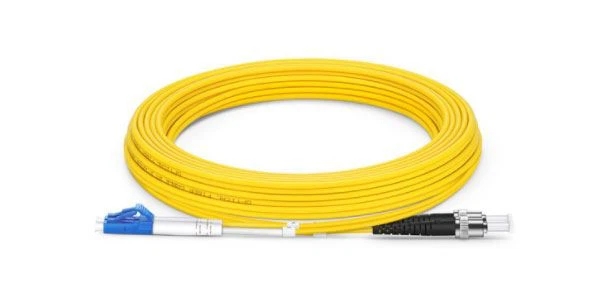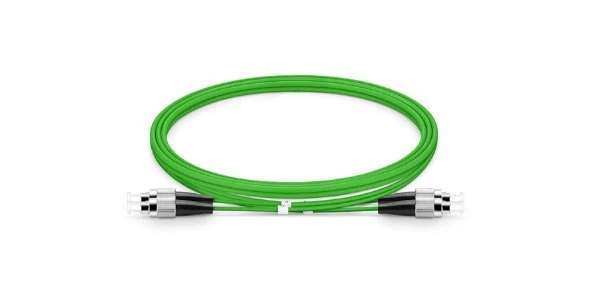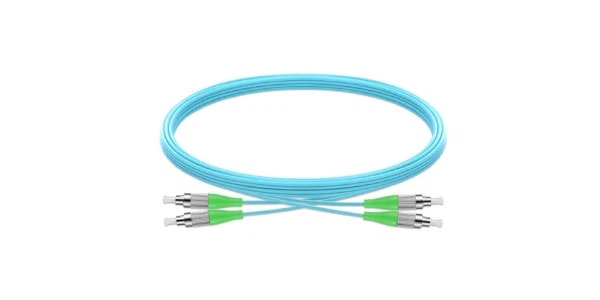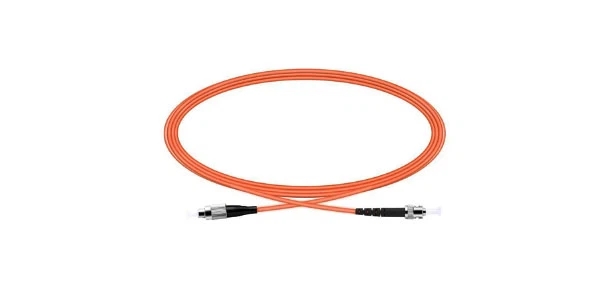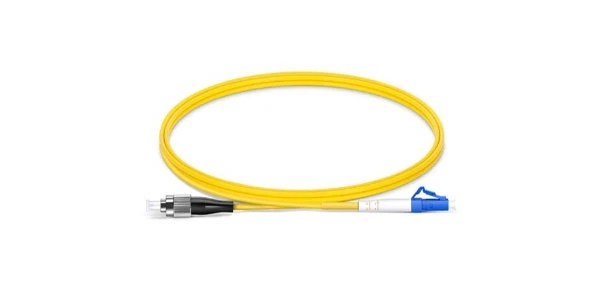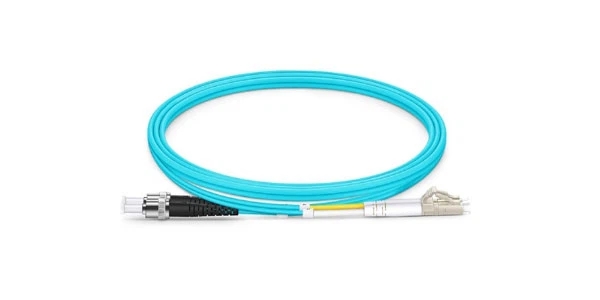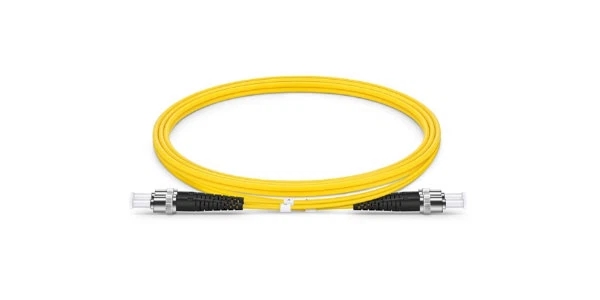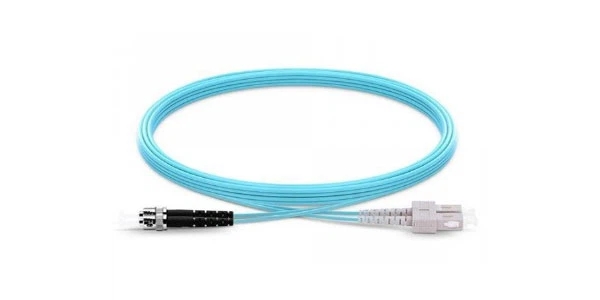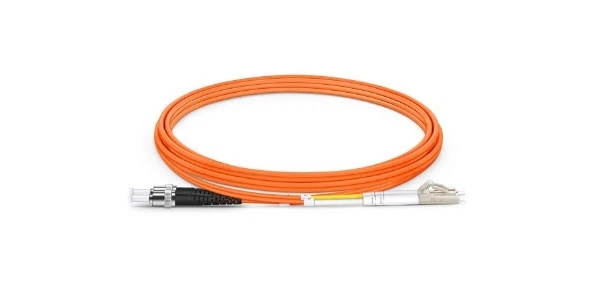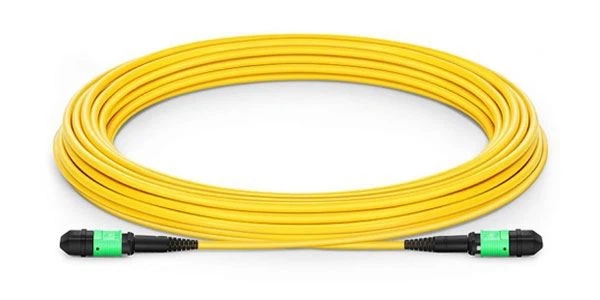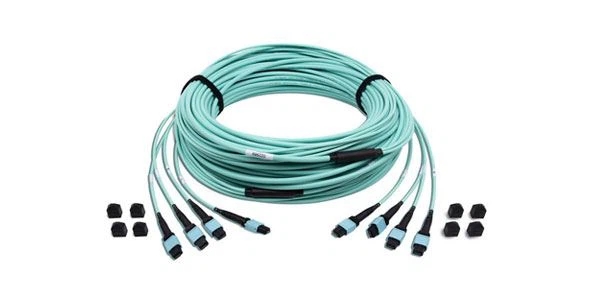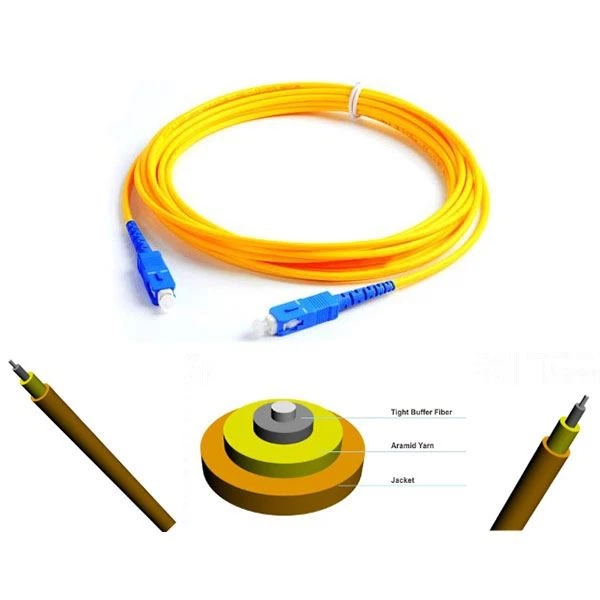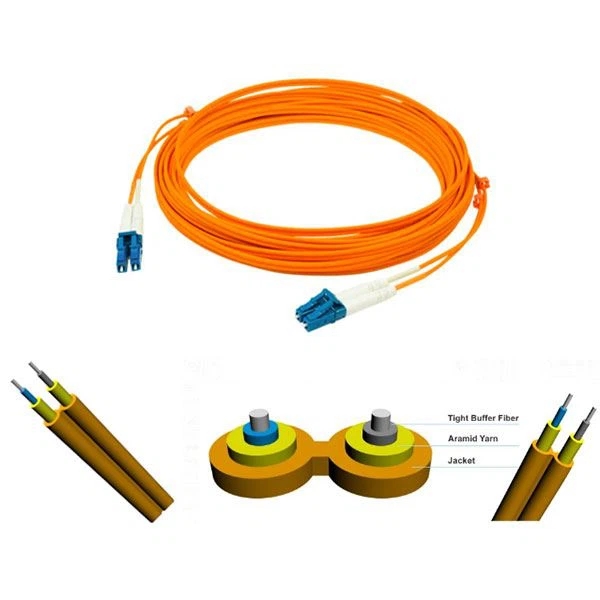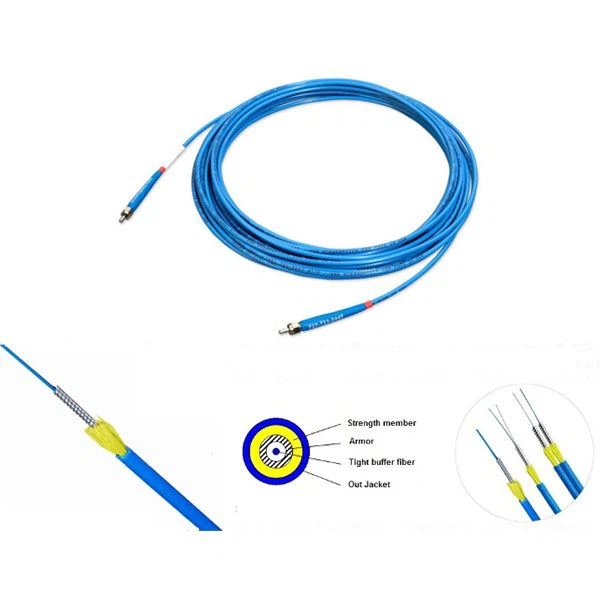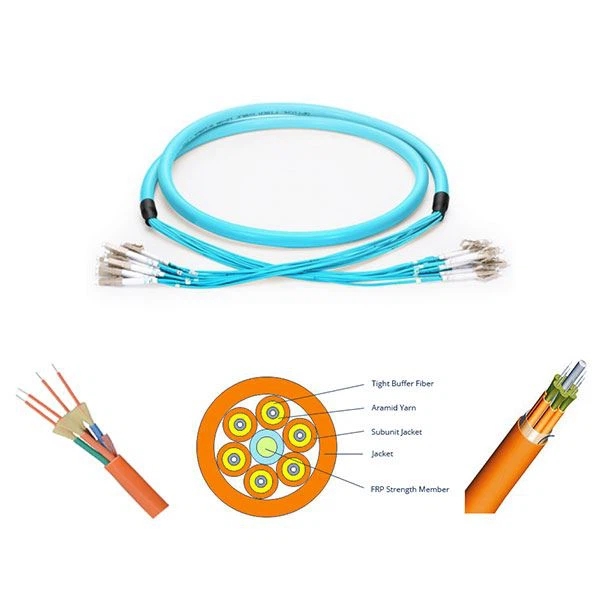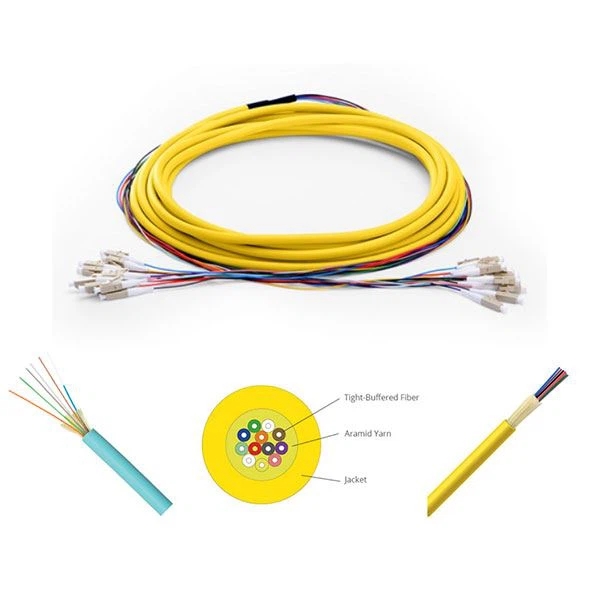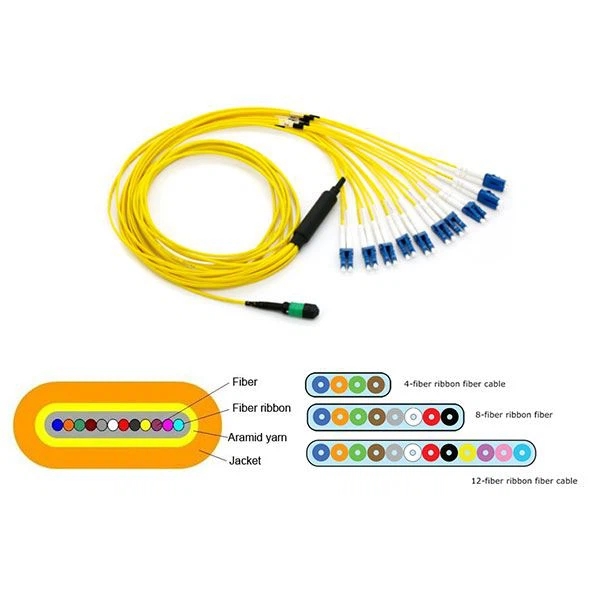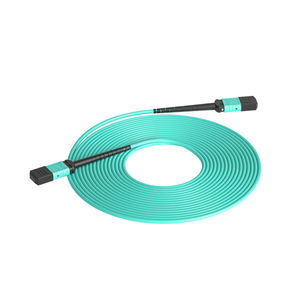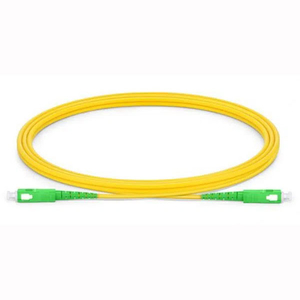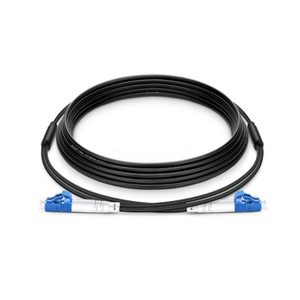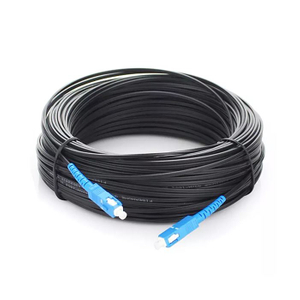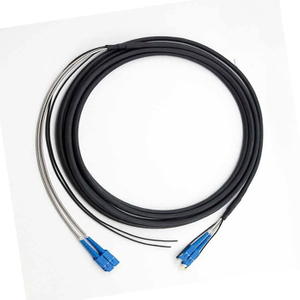TANGPIN, one of the leading fiber optic path cable manufactureres in China, has specialized in R&D, manufacturing, marketing, and sales of optical patchcords for over 15 years. We wholesale customized optical patchcords at factory direct prices, focusing on quality and innovation, constantly pushing new products according to the markets.
Our company is an experienced exporter on fiber jump cable. So far, we've served over 1000 customers from 100+ countries and regions in the telecom industry. Our main customers are telecom carriers, ISPs (Internet Service Providers), and telecom engineering companies in Europe, Asia, Africa, and North America.
TANGPIN Fiber Patch Cable Types
Fiber optic patch cable, also can be called as fiber optic patch cord, optical patch leads or fiber jumper, which is composed of a fiber optic cables terminated with fiber connectors on both ends. It's mainly used in fiber optic patch panels, optical cross connect cabinets, or distribution products. The patchcord can connect to CATV, media converter, optical switch and other telecom devices easily, rapidly, flexibly and conveniently.
According to the fiber types, terminated connectors, and fiber optic cable structures, fiber patch cords can be divided into different types.
Classified by different fiber types, there are 2 types of patch cables:
✔ Singlemode (SM) optical fiber patch cables
✔ Multimode (MM) opitcal fiber patch cables
✔ Singlemode fiber(SMF) patch cables
Single-mode fiber (SMF), also known as mono-mode fiber, is an optical fiber designed to carry only a single mode of light. The single mode fiber optic jumpers allow only one mode of light to pass along, and the diameter is very thin. Therefore, it can transmit signals at higher speeds with lower attenuation, more suitable for long-distance transmission.
A typical single-mode optical fiber has a core diameter between 8 and 10.5 µm and a cladding diameter of 125 µm. 9/125µm is commonly used. Single-mode fiber patch cable is composed of a fiber optic cable terminated with single mode fiber optic connectors at both ends. The jacket of SM patchcord is yellow by default.
According to different standards, there are 2 types of SMF, OS1 and OS2.
SM OS1 Simplex SC/APC Patch Cable
Yellow jacket
OS1 patch cable is used for indoor applications, and its transmission distance is upto 2km. The cable construction is tight buffered. OS1 single mode fibers are compliant with specifications of ITU-T G.652. A/B/C/D.
SM OS2 Duplex LC/UPC Patch Cable
Yellow jacket
OS2 patch cable is used for outdoor applications, and its transmission distance is upto 10km. The cable construction is loose tube. OS2 single mode fibers are only compliant with ITU-T G.652C or ITU-T G.652D standards.
✔ Multimode fiber (MMF) patch cables
Multimode fiber is available in two sizes, either 50/125 µm or 62.5/125 µm and a cladding diameter of 125 µm. Multi-mode fiber patch cable is composed of a fiber optic cable terminated with multimode fiber optic connectors at both ends. It can transmit multiple light modes. It is mainly used for short-distance transmissions such as buildings or campuses.
At present, there are 5 kinds of multi-mode fiber patchcord: OM1 patchcord, OM2 patchcord, OM3 patchcord, OM4 patch cord & OM5 patchcord. The letters “OM” stand for optical multimode.
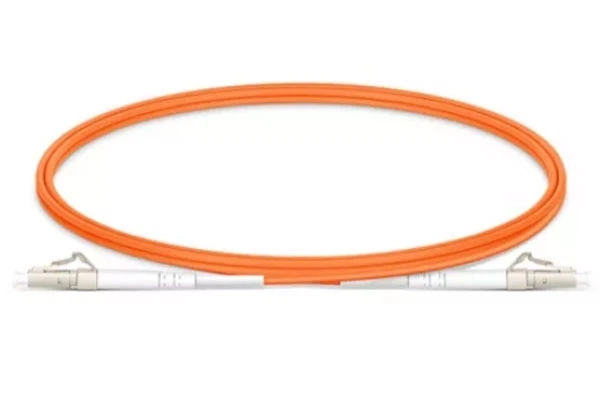
| OM1 Simplex LC/UPC-LC/UPC Patch cable | OM1 fiber patch leads with a core size of 62.5 micrometers (µm), is orange jacket by default. The OM1 patchcords can support 10G Ethernet at transmission distance up to 33 meters. It is universally used for 100 Megabit Ethernet applications. |
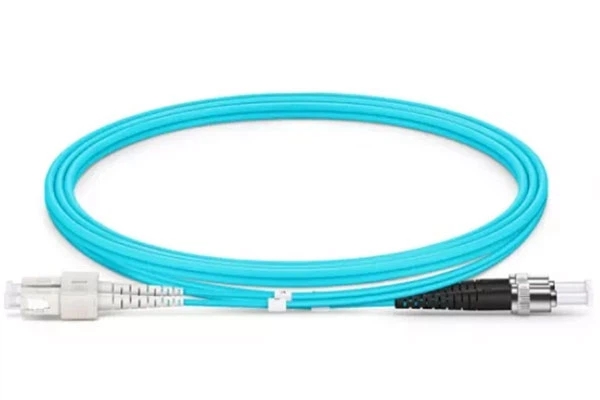
| OM2 Duplex
SC/UPC-SC/UPC
Patch cable | OM2 optical patch cords are also coming with an orange jacket and Its core size is 50µm instead of 62.5µm. It supports up to 10G Ethernet at a distance up to 82 meters. However it is oftenly used for 1 Gigabit Ethernet applications. |
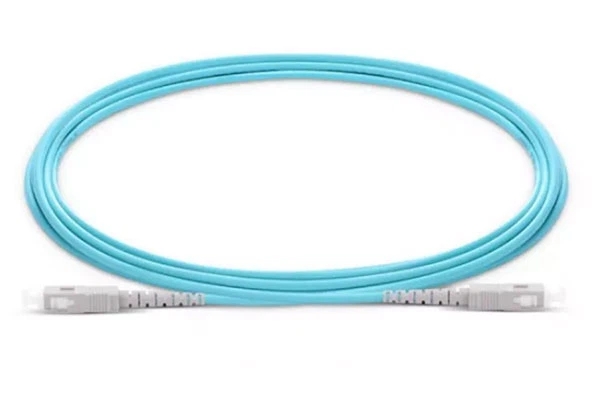
| OM3 Duplex
SC/UPC-ST/UPC
Patch cable | OM3 patchcord has a defaulted jacket color of aqua, with same core size of the OM2, 50 µm. This kind of patchcord supports 10 Gigabit Ethernet at distance up to 300 meters. It is commonly used in 10G ethernet, while it is able to support 40 Gigabit and 100 Gigabit Ethernet up to 100 meters. |
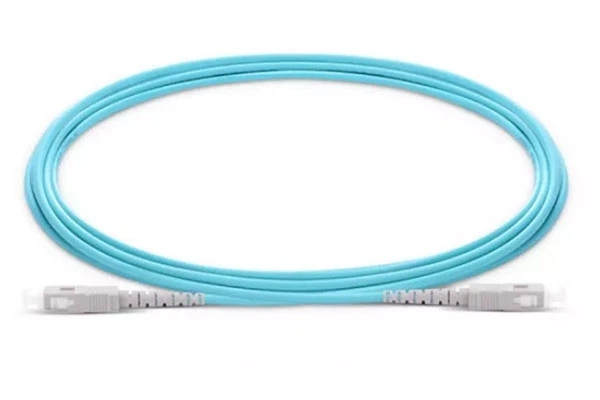
| OM4 Simplex
SC/UPC-SC/UPC
Patch cable | OM4 patchcord share the same core size 50 µm and Aqua color with the OM3 cable, but It is a further improvement based on the latter. It allows 10G/s link distances of up to 550m compared to 300M with OM3. And it’s able to run 40/100GB up to 150 meters utilizing a MPO connector. |
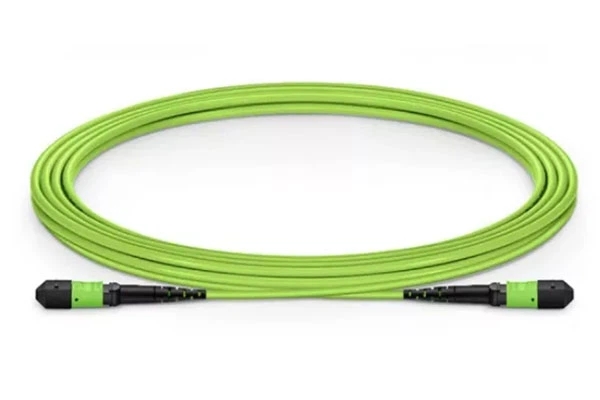
| OM5
12Cores
MPO/APC-MPO/APC
Patch cable | OM5 fiber is the newest type of multimode fiber, and it is backwards compatible with OM4. It has the same core size as OM2/3/4. The color of OM5 fiber jacket is lime green. The OM5 fiber patch cable can support at least four WDM channels at a minimum speed of 28Gbps per channel through the 850-953 nm window. |
Classified by fiber connectors
Fiber optic patch cord are terminated with a fiber optic connector on both ends. The connectors of fiber patch cord are available in ST, SC, FC, LC, MTP/MPO, and E2000, etc.
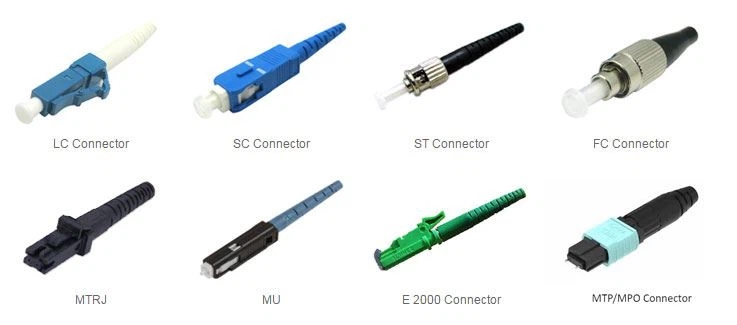
Different conector is used to plug into different devices. If ports in both ends are the same, then the ends can be collocated with same connectors, such as SC-SC, LC-LC, ST-ST, MPO-MPO, FC-FC. If not, chose the different connectors, like SC-LC, LC-FC, MPO-LC, ST-FC, FC-SC, etc. The most commonly used fiber optic connector types are SC, LC, ST, FC and MPO/MTP.
According to the Difference in the type of connector polishing, all the connectors are of 3 versions, PC, UPC & APC.
The UPC type has almost replaced the PC type. The insertion loss provided by APC is smaller than UPC, and APC types are more suitable for high-bandwidth applications and long-distance links, like Wavelength Division Multiplexing (WDM), Passive Optical Network (PON), and FTTx.

There are four types patchcords that are commonly used:
✔ SC (PC, UPC, APC) fiber optic patch cable
✔ LC (PC, UPC, APC) fiber optic patch cable
✔ FC (PC, UPC, APC) fiber optic patch cable
✔ ST (PC, UPC, APC) fiber optic patch cable
SC fiber optic patch cable
Here SC refers to Subscriber Connector or Square Connector or Standard Connector. It is extremely common in telecom fiber optic network. There are 3 versions of the SC connector: SC/PC, SC/UPC, SC/APC.
SC/APC-SC/APC OS2
SMF patchcord
SC/UPC-SC/UPC
OM2 MMF patchcord
SC/UPC-LC/UPC
OM3 MMF patchcord
SC/UPC-FC/UPC OS2
SMF patchcord
(Ps. The ends of the SC/APC, SC/UPC patchcords can be collocated with same connector SC/APC, SC/UPC, or different connectors like LC/APC, LC/UPC, ST/APC, ST/UPC, FC/APC & FC/UPC. Such as SC/APC-LC/UPC, SC/UPC-LC/APC, SC/APC-FC/APC, SC/UPC-ST/UPC, etc.)
LC fiber optic patch cable
LC stands for Lucent Connector and was developed by Lucent Technologies in the 1990s. LC connector is a small form-factor fiber optic connector and was developed to replace SC connector due to their smaller size. There are 3 versions of the LC connector: LC/PC, LC/UPC, LC/APC.
LC/APC-LC/APC OS2
SMF patchcord
LC/UPC-SC/UPC
OM4 MMF patchcord
LC/UPC-LC/UPC
OM2 MMF patchcord
LC/UPC-ST/UPC OS2
SMF patchcord
(Ps. The ends of the LC/APC, LC/UPC patchcords can be collocated with same connector LC/APC, LC/UPC, or different connectors like SC/APC,SC/UPC, ST/APC, ST/UPC, FC/APC & FC/UPC. Such as LC/APC-SC/UPC, LC/UPC-SC/APC, LC/APC-FC/APC, LC/UPC-ST/UPC, etc.)
FC fiber optic patch cable
FC stands for Fixed Connector, and it's of a 2.5mm diameter ferrule and a typical insertion loss of 0.25dB. They are universally used in datacom, telecom, measurement equipments. But now they are being gradually replaced by SC and LC connectors. There are 3 versions of the LC connector: FC/PC, FC/UPC, FC/APC.
FC/UPC-FC/UPC OM5
MMF patchcord
FC/APC-FC/APC
OM3 MMF patchcord
FC/UPC-ST/UPC
OM2 MMF patchcord
FC/UPC-LC/UPC OS2
SMF patchcord
(Ps. The ends of the FC/APC, FC/UPC patchcords can be collocated with same connector FC/APC, FC/UPC, or different connectors like SC/APC,SC/UPC, ST/APC, ST/UPC, LC/APC & LC/UPC. Such as FC/APC-SC/UPC, FC/UPC-SC/APC, FC/APC-LC/APC, FC/UPC-ST/UPC, etc.)
ST Fiber Optic Patch Cable
ST stands for Straight-Tip and features a Bayonet twist locking mechanism. ST connector has 2.5mm diameter ferrule as in SC connector. ST patchcord is very commonly used in fiber optic networks. There are 3 versions of the LC connector: ST/PC, ST/UPC, ST/APC.
ST/UPC-LC/UPC OM4
MMF patchcord
ST/UPC-ST/UPC
OS2 SMF patchcord
ST/UPC-SC/UPC
OM3 MMF patchcord
ST/UPC-LC/UPC OM2
MMF patchcord
(Ps. The ends of the ST/APC, ST/UPC patchcords can be collocated with same connector ST/APC, ST/UPC, or different connectors like SC/APC,SC/UPC, FC/APC, FC/UPC, LC/APC & LC/UPC. Such as ST/APC-SC/UPC, ST/UPC-LC/APC, ST/APC-FC/APC, ST/APC-FC/APC, etc.)
Apart from the above mentioned 4 types of connectors, there is another type of patch cable that are used increasingly today, that is MPO/MTP patchcord.
MPO/MTP fiber optic patch cable
MTP stands for "Multifiber Termination Push-on" connector, which is the first generation of clip-on clamp-on multicore fiber optic connectors. Each MTP contains 12 fibers or 6 duplex channels in a connector. MPO/MTP fiber optic cable consists of MPO/MTP connector and optical fiber.
There are 3 types of MPO/MTP patch cable, MPO/MTP trunk patch cable, and MPO/MTP breakout patch cable, which are ideal for high-density cabling networks and provide better network capacity and flexibility.
OS2 8F MPO-MPO
Patch cable
MPO/MTP patch cables are widely used in data centers to connect high-speed MPO/MTP optical transceivers, including 40G/100G/120G/200G/400G optical transceivers.
OM4 12F MPO- 6xDuplex LC Breakout Patch cable
MPO/MTP Breakout cables are mainly used to connect one high-speed optical transceiver the single-core fiber connector at the breakout end is basically using LC connectors.
OM3 144F MPO-MPO
Trunk Patch cable
MPO trunk cable are widely used in data centers with high-density fiber connections to centralize cabling. The trunk cable are usually installed in the MPO/MTP adapter panel, which can integrate up to 12x 12-core or 24-core MPO/MTP cables, supports max 144 or 288 fibers.
(We customize OM3 and OM4 multimode MPO/MTP patch cables, as well as 8-, 12- or 24-core Singlemode cables to meet customers’ special needs.)
Classified by different cable structure, there are 6 types of patch cables:
Simplex fiber patchcord
simplex fiber patch cable, an optical patchcord with one fiber and one single outer jacket. This patchcord transmit signals in only one direction, which is widely used in one way data network.
Duplex fiber Patchcord
Duplex fiber patch cable, also called double optical patchcord, which consists of two fibers with two connectors on both ends. This patchcord is typically used for duplex communication, bi-direction transmission.
Armored fiber Patchcord
Armored fiber patch cable use rugged shell with aluminum armor and kevlar inside the jacket, and it is 10 times stronger than regular fiber patch cord. This will help make the armored fiber patch cord resistant of high tension and pressure. This type patch cable is specifically ideal for light to medium duty indoor/outdoor applications.
Breakout fiber patch cable
Breakout cable, also known as fan-out cable, consists two or more simplex cables bundled around a central strength member. Each fiber has its own jacket and all of the fibers are packaged together inside the same outer jacket.There are no limitations on the choice of fiber type, connector type The breakout fiber jumper usually consists of 2.0mm tight buffered tube.
Distribution fiber patch cable
Different from the breakout cable, distribution cable is smaller in size and lighter in weight. The distribution cable usually consists of 0.9mm tight-buffered tube, inside where the cable are only bundled in a single outer jacket for protection, which made the distribution cable to be easily handled and stripped for field termination. No limits on the connectors and fiber type.
Ribbon fiber patch cable
Ribbon fiber optic patch cords look like a ribbon, and they consist of 8, 12, or 24 fibers arranged side by side. It has a high fiber density, which can save a lot of space when space is limited, which are widely used in indoor FTTH networks and indoor/outdoor point-to-point applications, and can also be used in MTP fiber optic distribution boxes for interconnection and crossover applications;
Why Choose TANGPIN Fiber Patch Cable
Competitive price
Compared with purchasing from a trader or a distributor, purchasing directly from us can save at least 30% of the cost and eliminate many intermediate links.
Quick responsive lead time and flexible MOQ also help our customers to make more reasonable purchasing plans.
15 years manufacturing experience
2600 square meters of modern manufacturing factory, with 20 non-dust production lines, a powerful R&D and technical team of 20 technicians, a strong QC team of 8 engineers, 150 well-trained staff. The current monthly production capacity for fiber patch cable is 200,000 Pcs.
We've introduced and adopted the most advanced automatic alignment machine, fiber curing equipment, testing instruments, cutting and assembly machine, polishing equipment, ferrule glue injection machine & insertion/return loss tester, etc.
Guaranteed quality
All fiber patch cables are tested before shipping and also support 5-years Warranty.
Our factory has been certified with ISO9001 quality and environment management system and uses an advanced ERP management system. All our fiber patch cables are RoHS compliant.

Cutting edge testing equipment to ensure our fiber patch cable works more securely and data transmission is more reliable and stable in the network application.

| End-face inspection | Insertion loss testing | Return loss testing |
24-hours services
24-hours-online professional pre-sales consultation, after-sales services & prompt feedback.
Customization Designs
Customization Designs service to integrating your own specifications.
Successful cases
TANGPIN has worked with over 500+ customers, and over 60% of our clients are telecom carriers & internet service providers.
In our domestic market, we've contracted with some FTTH projects of China Mobile and China Telecom, and won some tenders, Zhengzhou Metro station project, Hunan Radio, and Television Broadcast Network projects & University town Project, and so on.
Our overseas customers are mainly from Southeast Asia, Europe, and Africa, such as Telkom, T-Mobile, AsiaCell, AWCC, PMCL, FiberNet, etc.
Part of our partners

Complete Buying Guide of Fiber Patch Cables
What is Fiber Patch Cable?
Fiber patch cable also can be referred to as fiber patch cord/lead, or fiber optic jumper. It is a piece of fiber optic cable with connectors at both ends. Normally, it is connected to optical transceivers in routers, switches or other telecommunication equipment such as optical network terminals (ONT) or optical line terminals (OLT).

Fiber Patch Cable Types
Fiber patch cords can be categorized by different features, like fiber cable mode, communication types, jacket, connector, connector polish type, also other special kinds of patch cords.
● Fiber Cable Mode: Single-Mode and Multimode
The single mode fiber optic jumpers allow only one mode of light to pass along, and the diameter is very thin. Therefore, it can transmit signals at higher speeds with lower attenuation, more suitable for long-distance transmission. Single mode fiber optic jumpers - OS1, OS2 are yellow.

Figure 1: single-mode vs multi-mode
Multimode fiber jumpers have a larger core, usually 50 or 62.5 microns. It can transmit multiple light modes. It is mainly used for short-distance transmissions such as buildings or campuses.
● Transmission Mode: Simplex or Duplex
Simplex optical fiber patch jumpers consist of a single strand of optical fiber with a simplex connector at both ends. It can be connected with a pair of BiDi transceiver modules with one port.
Duplex optical fiber patch jumpers consist of two strands of glass or plastic and a duplex connector. It is usually connected with ordinary transceivers or dual-fiber BiDi transceivers.

Figure 2: Simplex vs duplex fiber patch cord
● Jacket Type: PVC or LSZH
Simplex optical fiber patch jumpers consist of a single strand of optical fiber with a simplex connector at both ends. It can be connected with a pair of BiDi transFiber optic jumpers covered with PVC sheaths are flexible at normal installation temperatures. They are often applied indoors like running horizontally from a cabling system.
Fiber optic jumpers covered with low-smoke halogen-free ( LSZH) sheaths are harder and less flexible. However, they contain flame-retardant compounds and will not release toxic fumes when burned. It is often applied in unventilated areas exposed to the public, like tunnels and subways, indoors which is hard to leave quickly as well.ceiver modules with one port.
Duplex optical fiber patch jumpers consist of two strands of glass or plastic and a duplex connector. It is usually connected with ordinary transceivers or dual-fiber BiDi transceivers.
● Connector Type: LC/SC/FC/ST/LSH/MU/MTRJ or Others
There are different kinds of connectors, the most common kinds are LC, SC, FC, ST, LSH, MU, MTRJ.
The same connectors type and hybrid connectors type are available. The same connector type refers to the same connectors at each end; while hybrid connector types have different connectors types at each end.

Figure 3: Different connectors types
● Connector polish type
In order to minimize back reflection, connectors are designed and polished into different shapes. According to the different polishing types, there are PC, UPC, and APC types. In recent applications, the UPC type has almost replaced the PC type. The insertion loss provided by APC is smaller than UPC, and APC types are more suitable for high-bandwidth applications and long-distance links, like Wavelength Division Multiplexing (WDM), Passive Optical Network (PON), and FTTx.

Figure 4: PC, UPC, and APC polish type
● Special kinds of fiber patch cords
To keep up with the increasing bandwidth demands, fiber optic patch cords are constantly evolving as well. Specially kinds of fiber optic patch cords came into being to meet the needs of different applications.
Bending-insensitive Fiber Patch Cords
They are highly resistant to bending-related loss and damage. With a smaller bending radius, it can prevent additional bending loss through innovative core wire design and enhanced low macro bending sensitivity. And they are designed to be applied in FTTH and data centers.

Figure 5: Bend insensitive fiber patch cord application
Armored Fiber Patch Cable
Compared with normal kinds of fiber patch cords, armored fiber patch cords have stainless steel armored tubes between the sheath and fiber. Therefore, armored fiber patch cords are able to resist rodents and people's footsteps. Although being sturdy, they are flexible as standard fiber patch cords and can be bent at ease.
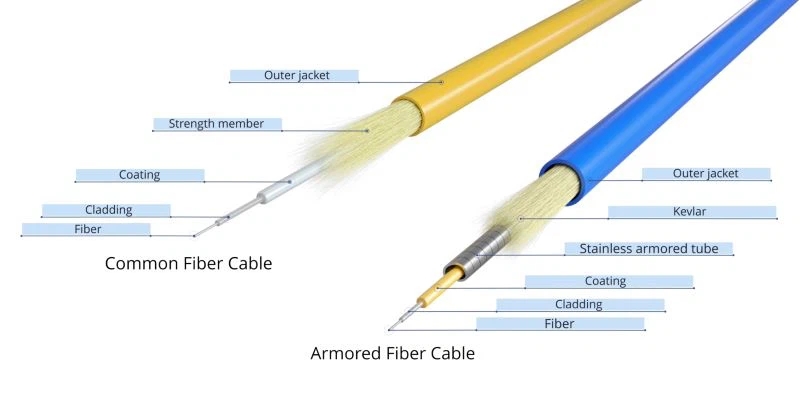
Figure 6: Common fiber cable vs armored fiber cord
Uniboot Fiber Optic Patch Cord
Uniboot fiber optic patch cords have a special design LC connector, which combines two fiber cables into one, thereby providing more advantages in a high-density cabling system. Compared to standard LC fiber patch cords, it can reduce the number of cables by up to 50%, and save more spaces in the applications.

Figure 7: Standard LC cable vs uniboot LC cable
Fiber Patch Cable Features
High-quality zirconia ferrules
Low insertion loss, high return loss
Good repeatability and interchangeability
Assemblies are machine polished providing excellent quality
Factory tested and come with a test protocol
Fiber Patch Cable Standards
YD/T1272.1-2003
IEC 61754
IEC 60793-2-10
IEC 61300-3-35
TIA 604 (FOCIS)
TIA/EIA 492AAAE
Structure of the Fiber Optic Patch Cable
Fiber
Major components of a fiber cable are the core, cladding, Kevlar, and jacket.

Connector
The connector is the piece that plugs into the equipment. It usually features some kind of locking mechanism, such as a tab.

Fiber + Connector
Fiber patch cables are the combination of fiber optic cables with connectors on each end.

Fiber Patch Cable Working Principle
Light enters and passes through the fiber core from one end of the fiber jumper, and then reflects from the cladding with a low refractive index. When the light gets to the other end, it will be scattered at an angle of about 60° and emitted to the target.
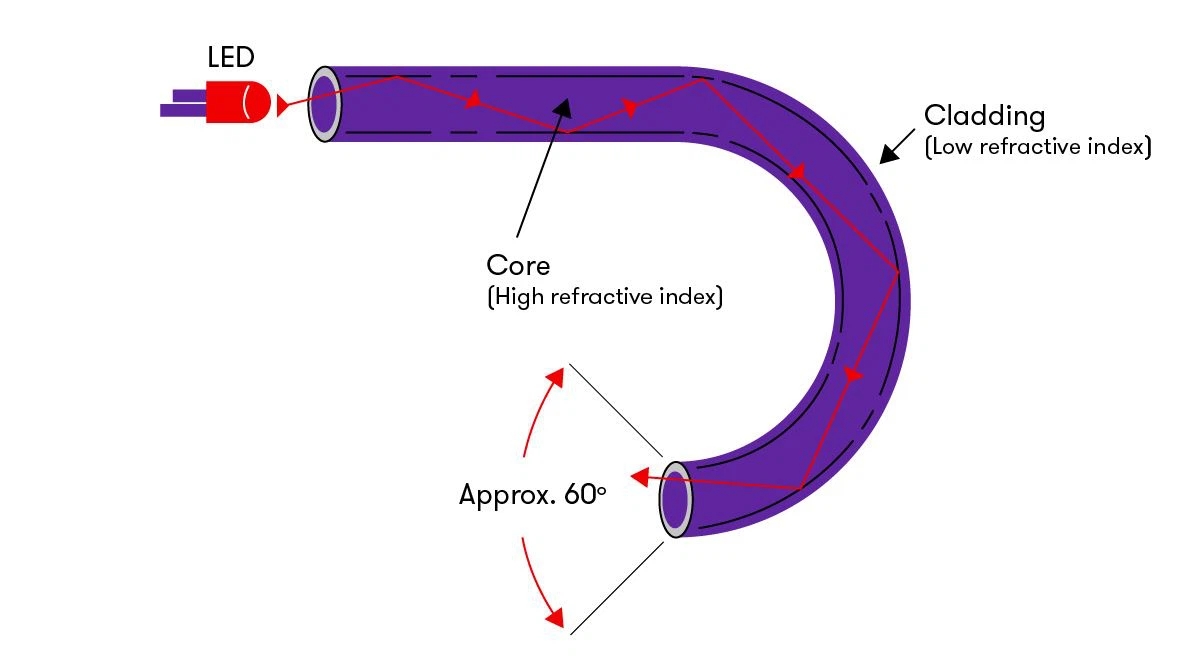
This fiber optic cable diagram shows the basic principle of the technology and how it works.
Application Areas of Fiber Patch Cable Cords
Apply to the cross-connection in the building with a short distance, or the interconnection between the back to back devices such as:
FTTX applications
MANs, WANs, LANs applications
Optical Data network
computer networking
telecommunication networks
cable TV networks
broadcasting
spectroscopy
Illumination
LED Energy Transmission
Medical Instruments
Optogenetics
Military and Aerospace
Differences Between Fiber Patch Cable and Copper Cable
Bandwidth: Fiber patch cable provides up to 10 Gbps and beyond bandwidth, while copper cable has a relatively smaller bandwidth of 60 Tbps and beyond.
Distance and speed: fiber patch cables can carry optical signals over far longer distances than copper cables. Compared to copper cables, fiber patch cables enjoy a significant speed advantage.
Reliability and safety - Fiber optic cable is much less subject to bad influences of environmental factors such as water, wind, temperature, etc. And it does not radiate signals and cannot be tapped, while copper cables are vulnerable of being tapped and resulted in the failure of the system.
Network Cable Classification And Explanation
A network cable, a medium that transmits information from a network device (such as a computer) to another network device, is the basic component of a network connectivity. In our commonly used local area networks, there are many types of network cables used. Under normal circumstances, a typical local area network generally does not use a variety of different types of network cables to connect network devices. In large networks or wide area networks, different types of network cables are used to connect different types of networks together. Among the many types of network cables, the specific network cable to be used should be selected according to the network topology, network structure standards and transmission speed.
Technical Data
Technical Data Download
Physical Characteristics | Description |
Connector Types End A | LC/SC/ST/FC/LSH/MU/MTRJ |
Connector Types End B | LC/SC/ST/FC/LSH/MU/MTRJ |
Polish Type | SMF: UPC-UPC; UPC-APC; APC-UPC; APC-APC; MMF: UPC-UPC |
Connector Ferrule | Zirconia Ceramic |
Cable Outside Diameter | Duplex: 2.0/3.0mm, Simplex: 0.9/2.0/3.0mm |
Interchangeability | ≤0.2dB |
Vibration | ≤0.2dB |
Minimum Bend Radius | SMF: 10mm/30mm; MMF: 7.5mm/15mm |
Mechanical Characteristics | Description |
Fiber Type | OS2/OM5/OM4/OM3/OM2/OM1 |
Fiber Count | Duplex /Simplex |
Cable Jacket | PVC (Riser/OFNR)/LSZH/Plenum (OFNP) |
Jacket Color | OM1/OM2: Orange; OM3/OM4: Aqua; OM5: Lime Green; OS2: Yellow |
Fiber Grade | SMF: G.657.A1/G.652.D; OM5/OM4/OM3/OM2: Bend Insensitive;OM1: G.651 |
Optical Characteristics | Description |
Connector Insertion Loss | LC/SC/ST/FC/LSH/MU/MTRJ≤0.3dB |
Connector Return Loss | SMF: UPC≥50, APC≥60 (LC/SC/ST/FC/MU/MTRJ), UPC≥55, APC≥75 (LSH) MMF: UPC≥30 (LC/SC/ST/FC/LSH/MU), UPC≥35 (MTRJ) |
Attenuation at 1310nm | 0.36dB/km |
Attenuation at 1550nm | 0.22dB/km |
Attenuation at 850nm | 3.0dB/km |
Attenuation at 1300nm | 1.0dB/km |
Environmental Characteristics | Description |
Operating Temperature | -20~70℃ |
Storage Temperature | -40~80℃ |
